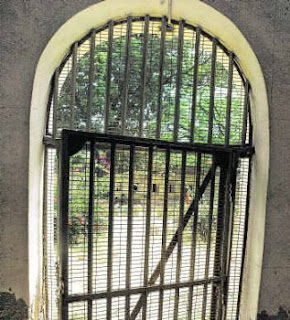Part II
The Happenings
in Hyderabad
By Francis Xavier Neelam
 |
| Jail inside Residency |
News of the mutinies and the
violent retribution on captured sepoys reached the soldiers in the employ of
the native princes also. Several maulvies and faqirs also visited the cantonments and preached revolt against the
British.
When a contingent of the 3rd
Cavalry of the East India Company, stationed at Buldhana was ordered to march
to Delhi
The mutiny was brutally put down.
Of the captured one was hanged; twenty one shot down and three more blown from
the mouth of cannon. Many were flogged.
Thirteen troopers, under the leadership of Jemadar Cheeda Khan, escaped
and headed for Hyderabad
The news spread like wild fire
through out the city. As fellow Muslims
the citizens felt that the mutineers should have been given sanctuary instead
of being handed over to the British.
Mualvi Syed Alluddin preached a sermon calling upon the Muslims to
secure the release Cheeda Khan.
By this time many deserters from
Native Infantry and Cavalry units of the East India Company have already
started trickling into Hyderabad
The developments were being
watched keenly by the Resident. Salar
Jung also kept passing information to him.
Major Davidson, a professional soldier, started fortifying the Residency
as a precautionary measure. He had three
hundred sepoys of the Madras Native Infantry stationed in the compound along
with some troopers of the Madras Light Cavalry and one troop of the Hyderabad
Contingent Cavalry. There was also a
garrison in Secunderabad known as the Hyderabad Subsidiary Force under
Brigadier Coffin.
Although Salar Jung assured him
that there was no cause for worry Maj. Davidson thought it prudent to get some
reinforcements. About hundred Europeans
and some guns were sent by Brig. Coffin.
Some officers who were on a visit to the city volunteered their
services. The most important weapons,
three guns of the Madras Horse Artillery, were mounted in strategic locations
on the walls under the command of Capt. Holmes.
They were loaded with double charges of grape shot -- deadly weapons of mass killing!
The defenders have been drilled
to man their stations in seven minutes when the alarm was sounded.
***
